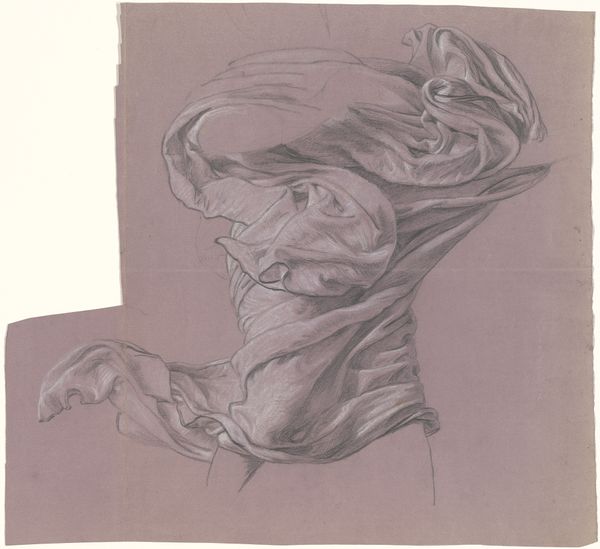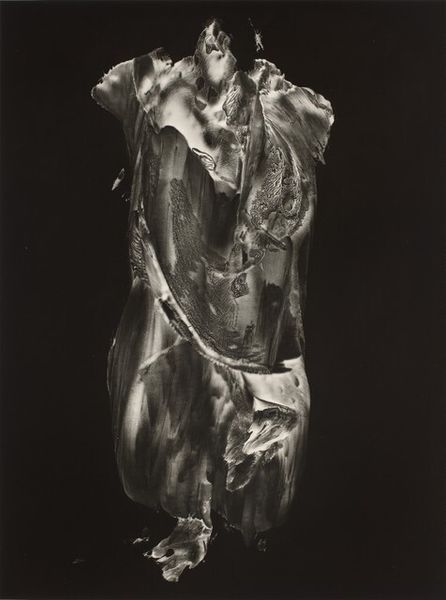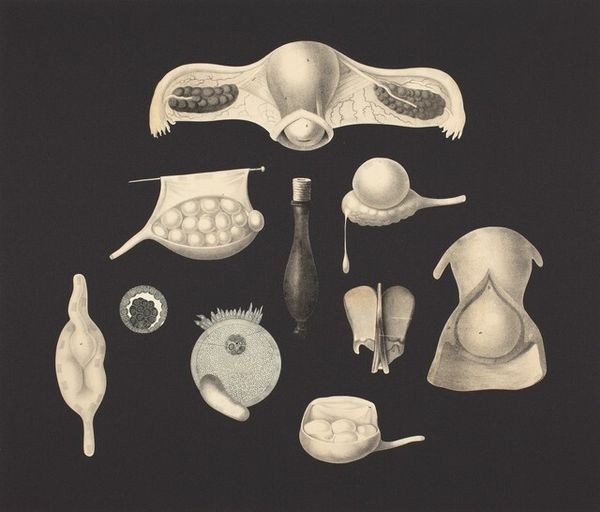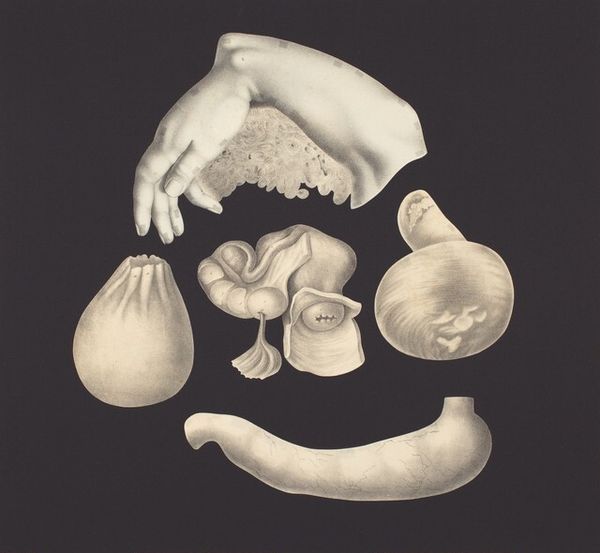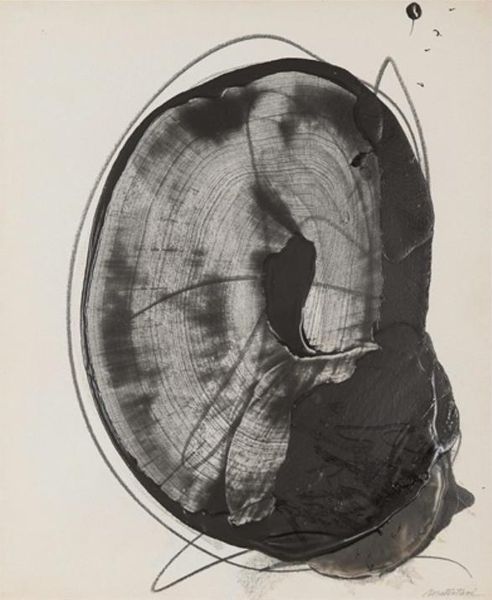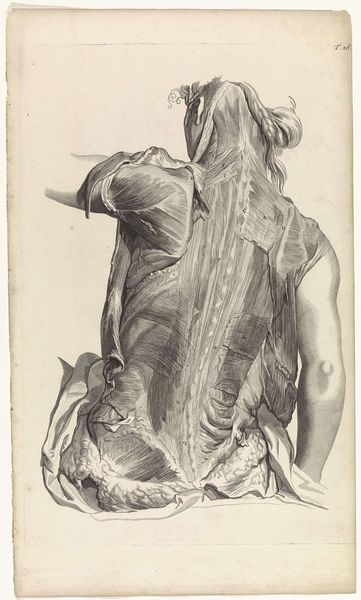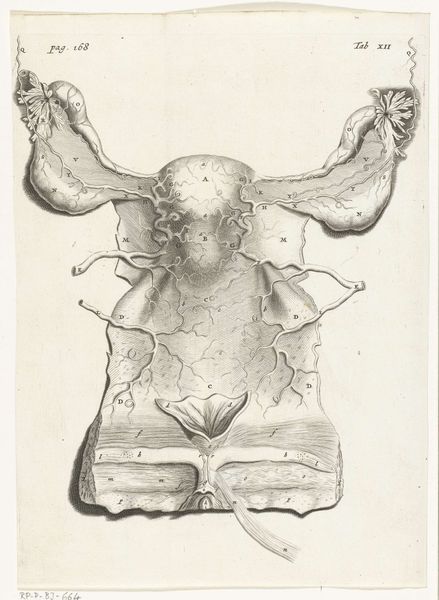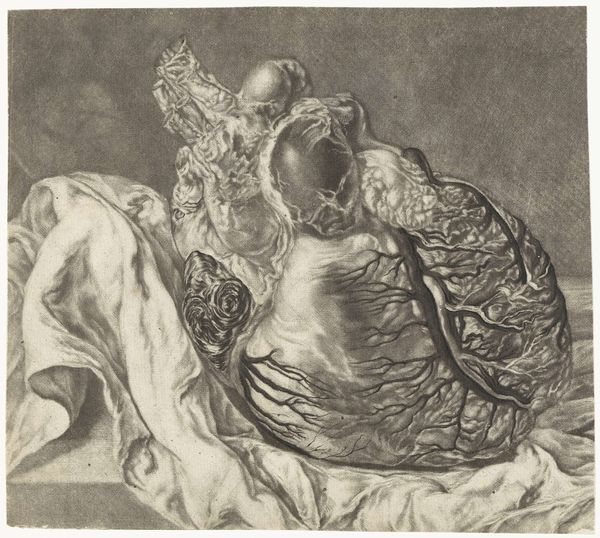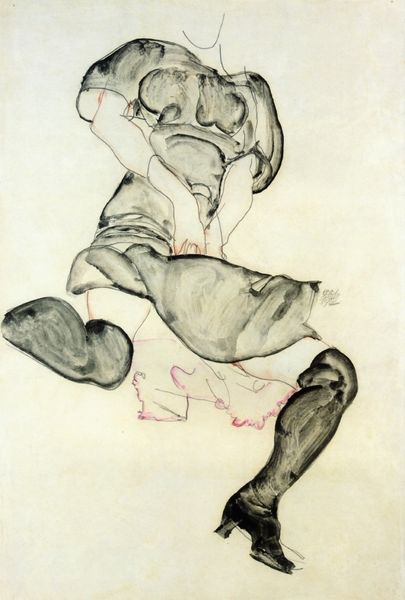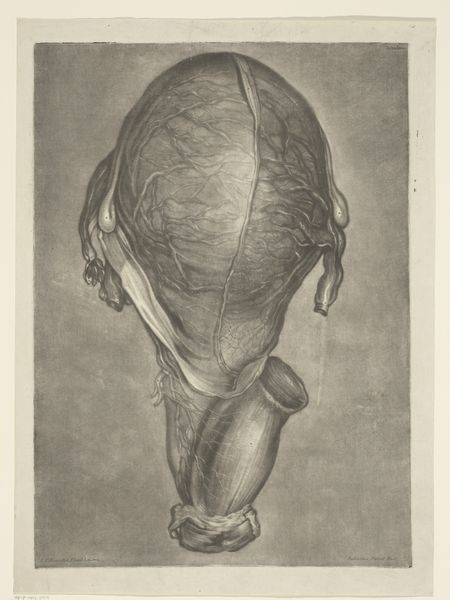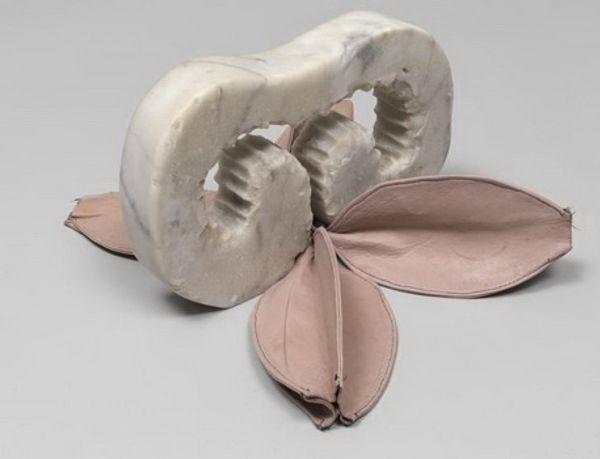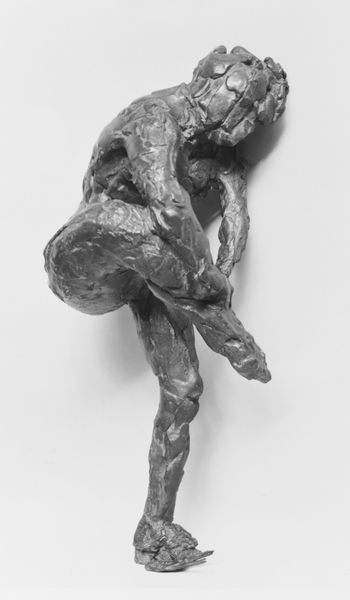
mixed-media, collage, print
#
mixed-media
#
collage
# print
#
figuration
#
surrealism
#
abstraction
#
surrealist
#
surrealism
Dimensions: image: 35.1 x 42.7 cm (13 13/16 x 16 13/16 in.) support: 49.6 x 56.6 cm (19 1/2 x 22 5/16 in.)
Copyright: National Gallery of Art: CC0 1.0
Curator: Frederick Sommer's "Pietà" from 1992, realized through mixed media and collage printing techniques, presents a challenging tableau. What strikes you immediately about this unsettling composition? Editor: Viscerally, it’s jarring. A monochrome landscape of exposed flesh, archaic surgical instruments hovering like menacing angels...there's a clinical detachment meeting almost perverse curiosity. It’s like flipping through an old anatomy textbook only to discover a ghost story nestled in its pages. Curator: The title obviously evokes the suffering of the Virgin Mary cradling the dead Christ. In that context, Sommer positions the medicalized body as a site of profound pain and possibly, exploitation. Medical practices and the way suffering is displayed in hospitals have always had social implications worth of being addressed. Editor: Absolutely, there's an unholy juxtaposition here. It is as if faith and science are performing some gruesome autopsy on the human condition itself. The "Pietà" references sacrifice, divinity—this twisted version reflects something almost monstrous lurking in clinical spaces, or maybe just humanity itself stripped bare, examined and experimented. I feel revolted but also weirdly, utterly gripped by it. Curator: Indeed, it critiques institutions that dissect life—both literally through surgical practices and metaphorically through societal structures. It forces us to contemplate how we as a society deal with suffering, and who decides the boundaries of permissible interventions on the human form. Editor: Sommer invites us not merely to look, but to really _see_ the precariousness of our bodies and the slippery slope of our interventions. Is this an absurd drama of cure and catastrophe, of salvation and sacrilege rolled into one single disturbing composition? The dark backdrop allows this stage of the body parts to stand out to emphasize a sense of medical theater. Curator: These questions remain pointed, even decades after its creation. The composition shows our perpetual struggle to grasp the implications of life, death, intervention, and above all, the burden of responsibility we must shoulder. Editor: A responsibility that, dare I say, weighs heavier once glimpsed through Sommer's beautifully brutal lens.
Comments
No comments
Be the first to comment and join the conversation on the ultimate creative platform.
